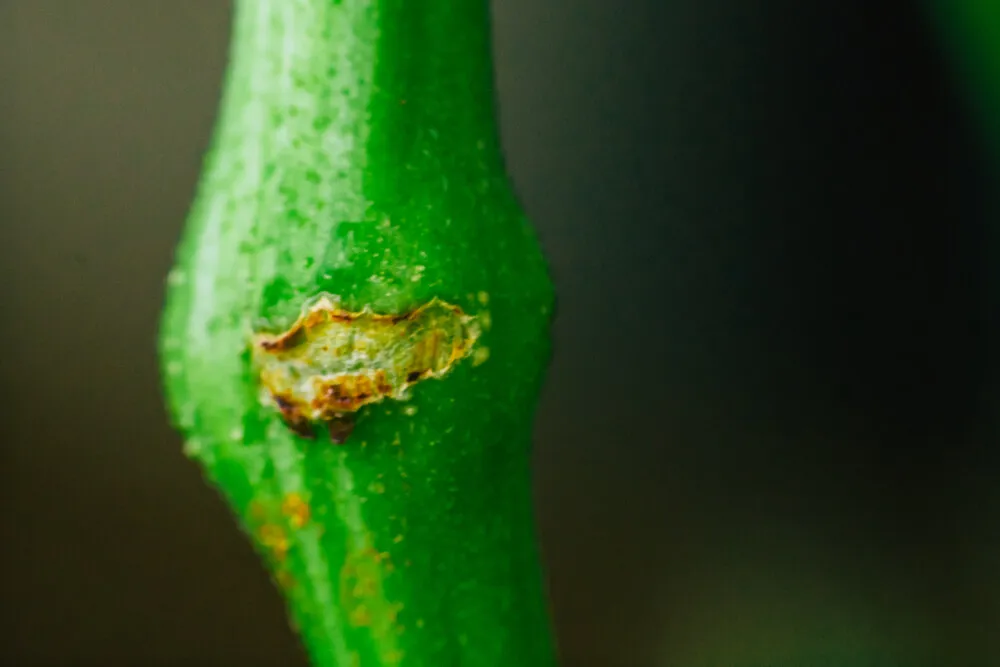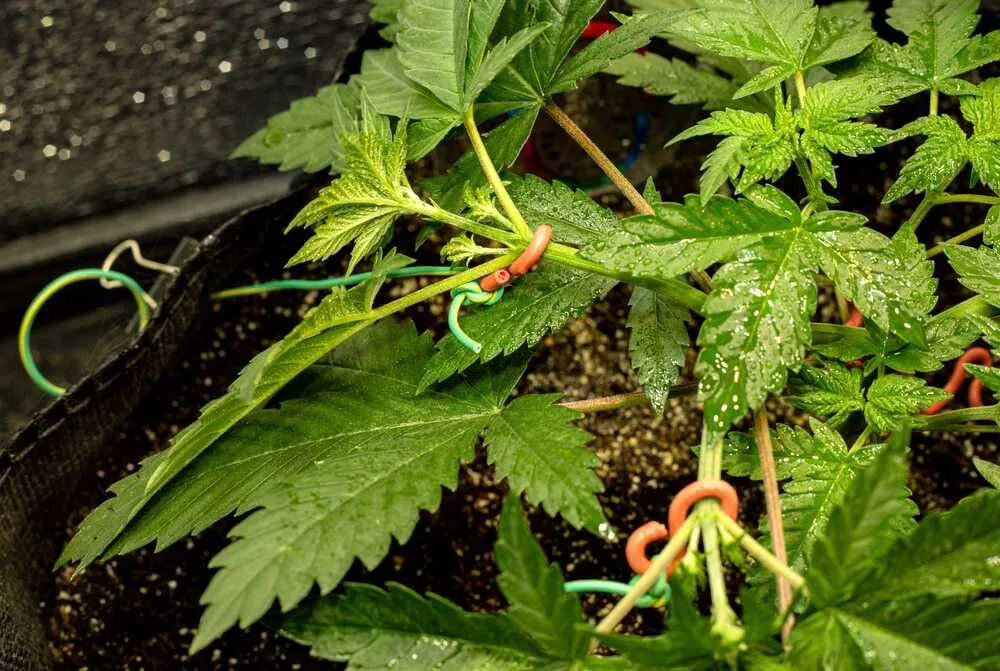Indoor growers can use cannabis plant training to increase their yields. One of the most popular plant-training techniques is known as super cropping. Basically, it means damaging a bud site so that it grows back stronger.
- What is super cropping?
- What are the advantages of super cropping cannabis?
- Step-by-step guide to super cropping
- How Super Cropping Increases Yields
- Enhancing THC Production Through Stress Techniques
- How to Combine Super Cropping with Other Training Methods
- When is the best time to super crop cannabis?
- How often can you super crop?
- Can you super crop autoflowers?
- What is the difference between topping and super cropping?
- Is super cropping harmful to the plant?
- Can you super crop autoflowers?
- What is the difference between LST and super cropping?
- How long does it take plants to recover from super cropping?
- What happens if I accidentally break a branch while super cropping?
What is super cropping?
Super cropping is a high-stress training (HST) technique used in cannabis cultivation that involves bending and gently damaging the plant stems to promote more vigorous growth. The idea behind deliberately stressing the plant is to encourage the stems to grow back stronger and be able to support heavier bud development. Super cropping also encourages a wider plant structure, allowing for a more efficient distribution of energy, resulting in higher yields.
What are the advantages of super cropping cannabis?
Super cropping offers several benefits for cannabis growers. It increases bud production by stimulating the plant to produce more colas whilst also enhancing potency by redirecting energy into developing stronger buds. Super cropping also improves overall plant health by making the stems more robust and capable of supporting heavier yields and improves light distribution to ensure all parts of the plant receive an adequate amount.
Step-by-step guide to super cropping

Tools You Need to Super Crop
Super cropping doesn’t require many tools, but having a few on hand can make the process easier. You’ll need clean hands, sterilized pruners (in case you need to remove any damaged parts), and some soft plant ties or tape to support the branches after bending.
How to Select the Right Branches for Super Cropping
Choose the tallest branches that are receiving the most light. These branches tend to outgrow the lower ones, causing uneven light exposure. By super cropping these dominant branches, you can redistribute growth hormones and even out the canopy, ensuring all parts of the plant receive adequate light.
The Pinching Technique: How to Bend and Stress the Stems
To super crop, start by pinching the branch between your thumb and forefinger, squeezing gently until you feel the internal fibers softening. Once the branch becomes malleable, carefully bend it at a 90-degree angle. The goal is to bend without breaking the outer skin of the branch. If the branch does break slightly, you can use plant tape to support it as it heals.
Monitoring and Supporting the Plant After Super Cropping
After super cropping, it’s essential to monitor the plant’s recovery. The branches will usually stand back up within a few days as the plant heals. During this time, you can tie down the branches or provide extra support with soft ties to encourage horizontal growth. Keep an eye on the plant’s overall health and ensure it has enough water and nutrients to recover fully.
How Super Cropping Increases Yields
Super cropping encourages the plant to direct energy to multiple bud sites instead of just the top colas. By creating an even canopy, the plant receives more light evenly across its surface, leading to more substantial, denser buds. The plant’s response to the stress also results in thicker stems that can support larger flowers, increasing overall yields.
Enhancing THC Production Through Stress Techniques
The stress caused by super cropping stimulates the plant to produce more resin, which is where cannabinoids like THC are found. As a defense mechanism, the plant increases its resin production in response to injury, which can result in more potent buds. Many experienced growers use this technique specifically to enhance THC content.
How to Combine Super Cropping with Other Training Methods

Super cropping can be used in conjunction with other training techniques like low-stress training (LST) or topping. Combining these methods helps you shape the plant for optimal light exposure and space management, further boosting yields and cannabinoid production. For instance, after super cropping, you can use LST to guide the plant’s growth in the desired direction, maximizing the benefits of both methods.
When is the best time to super crop cannabis?
The best time to super crop cannabis is during the vegetative stage when the stems are most flexible. Ideally, start super cropping when the plant has developed four to six sets of leaves. Super cropping during this stage allows the plant to recover and continue growing vigorously, preparing it for a productive flowering phase. This timing ensures the plant can handle the stress and benefit from the training technique.
How often can you super crop?
You can super crop cannabis plants every few weeks during the vegetative stage. This frequency allows the plant to recover and develop stronger branches without excessive stress.
Can you super crop autoflowers?
Super cropping autoflowers is not recommended because their shorter lifecycle doesn't allow enough time for recovery. Instead, consider low-stress training (LST) for autoflowers to maximize yields.
What is the difference between topping and super cropping?
Topping involves cutting off the plant’s top to promote bushier growth, while super cropping involves bending and slightly damaging the stems to increase strength and bud production.
Is super cropping harmful to the plant?
No, when done correctly, super cropping is not harmful and can lead to stronger plants and higher yields.
Can you super crop autoflowers?
It’s generally not recommended to super crop autoflowers due to their shorter life cycle, which may not allow enough time for recovery.
What is the difference between LST and super cropping?
LST (Low-Stress Training) gently bends branches without causing damage, whereas super cropping involves intentionally damaging the stems to promote stronger growth and increased yields.
How long does it take plants to recover from super cropping?
Plants typically take 5-7 days to recover from super cropping. During this period, the stems form knuckles at the bend points, strengthening the plant for future growth.
What happens if I accidentally break a branch while super cropping?
If you break a branch, you can tape it up, and the plant will usually heal itself. Just ensure proper support and care during recovery.









